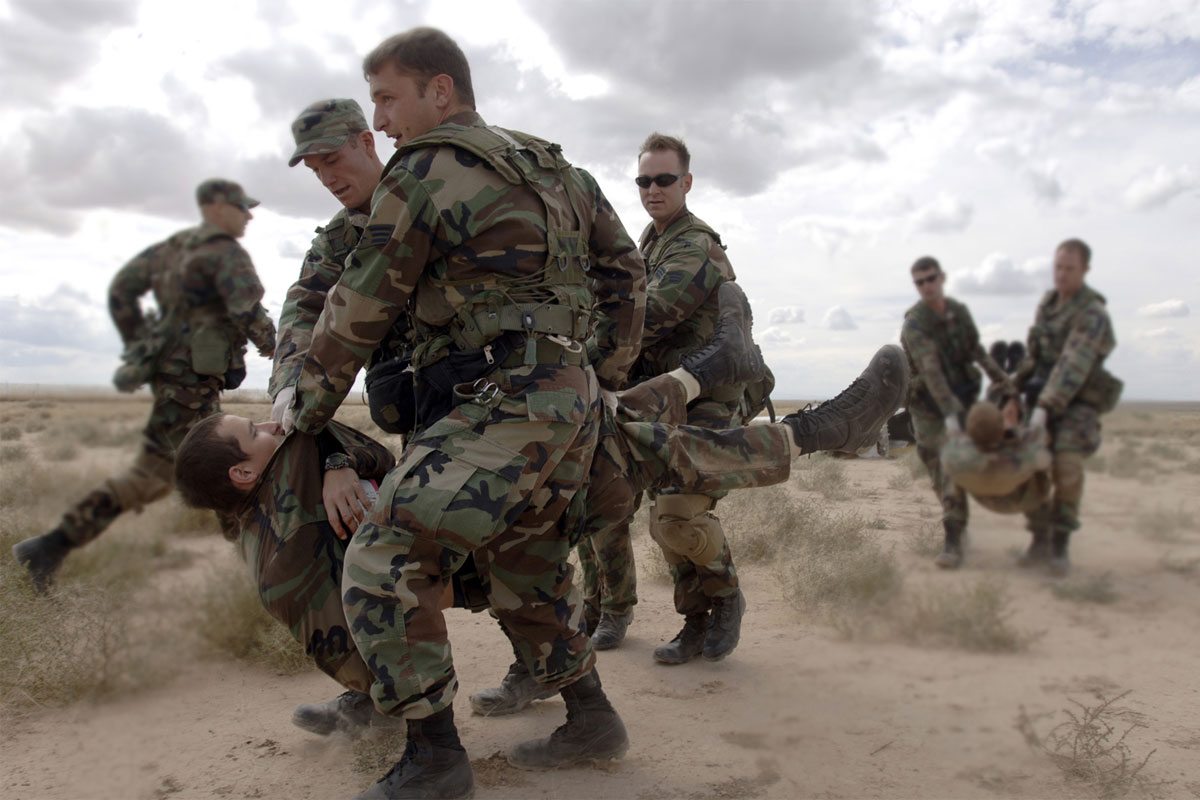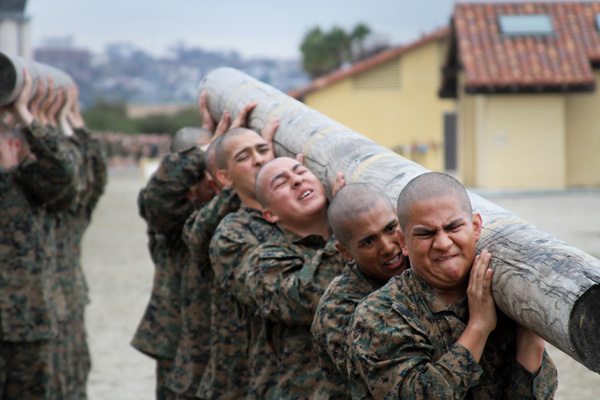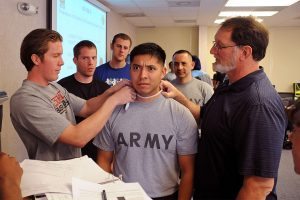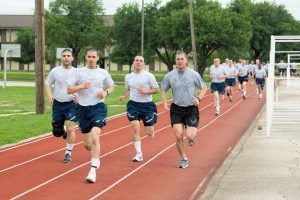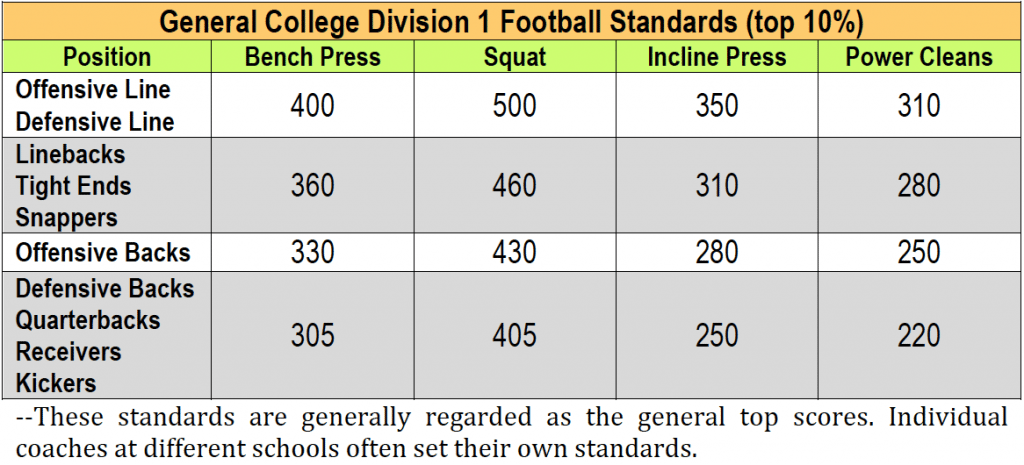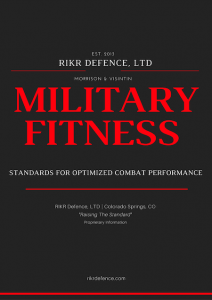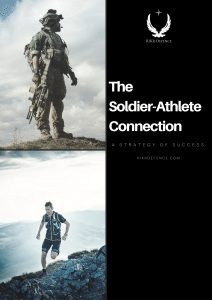If you’re like most people, the subject of military fitness is a bit murky. On the one hand we all have this idea that because combat is a life and death struggle, the training for combat has to be of the same intensity. No pain, no gain! Go hard or go home! Right?
And yet, this approach categorically does not work. It never has and physiologically it never can. Some will insist that it does but they are deluded by false perceptions of their actual capability. For example, that seven-minute mile you’re so proud of might sound impressive to you. However, it wouldn’t get you a win on the girl’s junior varsity track team. The slowest speed to be remotely competitive in girl’s JV track is a 6:30 mile. That’s quite a blow to the ego of a 20-year-old man.
We are surrounded in the DOD and the tactical community with lots and lots of false perceptions. The internet is abuzz with boasting about Crossfit workout times, smoke session workouts and the like. But there is a dark side that no one is talking about. It begins with the fact that despite all the chest thumping and boasting, Basic Military Training averages an approximately 20% medical & injury washout rate. The number of service members sent to medical hold is higher than that but some do in fact heal and are able to successfully recycle. But across the services, 20% are discharged and sent home. There is another percentage that is discharged from Advanced Individual Training, though it is much smaller and varies widely by MOS/AFSC/NEC. The highest levels are obviously from Combat Arms specialties. The unspoken dark side of special operations selection courses are those men who successfully completed selection but are so physically broken they cannot complete the rest of the training pipeline and are reclassified, returned to their units or medically discharged. There is yet another crop of these men who complete the pipelines but are so broken afterward that they are forced to cross-train, take staff positions or get medically discharged. Each and every one of these instances represents wasted time and money for the Armed Forces and shattered lives and dreams for the service members in question.
The reality is that few people, to include the military services themselves, understand anything about physical training, let alone physical training for military service. Today we see on display a stunning example of cognitive dissonance in action. Every one trains hard and to failure all the time. They think their performance is pretty good to outstanding as they compare their performance to metrics that have nothing to do with the job. And then they wonder why they can never get to that next level, or why they are hurt all the time, or why every time they try to up their game they fail. The solution that everyone applies is the exact same thing that failed before. Is this starting to sound familiar? Let me remind you that a popular definition of insanity is doing the same thing over and over again while expecting a different result. Let’s put an end to that today!
The primary problem with physical training and physical fitness in the military today is twofold:
- No one understands how to train the human body for moderate to high performance.
- Everyone is using the wrong model to evaluate where they stand.
The first issue is one that I have written many books on and is far outside the scope of this article today. Thus I would like to move on to the second issue.
When it comes to what you’re training for, we have competing objectives in our heads. On the one hand we all think we should be a cross between Rambo and Jason Bourne. However, few of us are there physically so we set an intermediate goal of passing our service physical readiness test. Regardless of the service, this test is composed of a run and two calisthenics. The calisthenics are a variation of the push-up, sit-up and pull-up. Universally these tests are despised because every service member knows that these events do not accurately test the physical traits required for combat. They are also hated because most service members struggle for their entire careers to score well on these tests. That second point leads most folks into the local gym because the pop culture resources all say you need to get big, get super strong, do this thing called cardio and look like a fitness model or bodybuilder. No matter if the service member picks up bodybuilding, spin classes, power lifting, Olympic lifting, Crossfit or any other method of additional training, their performance stays more or less the same. They may experience temporary spikes in performance. They may get bigger and stronger to a point. They may cut some fat. They may love what they’re doing with a passion. But at the end of the day, their performance on the military PRT doesn’t change significantly and they never leave it in the dust.
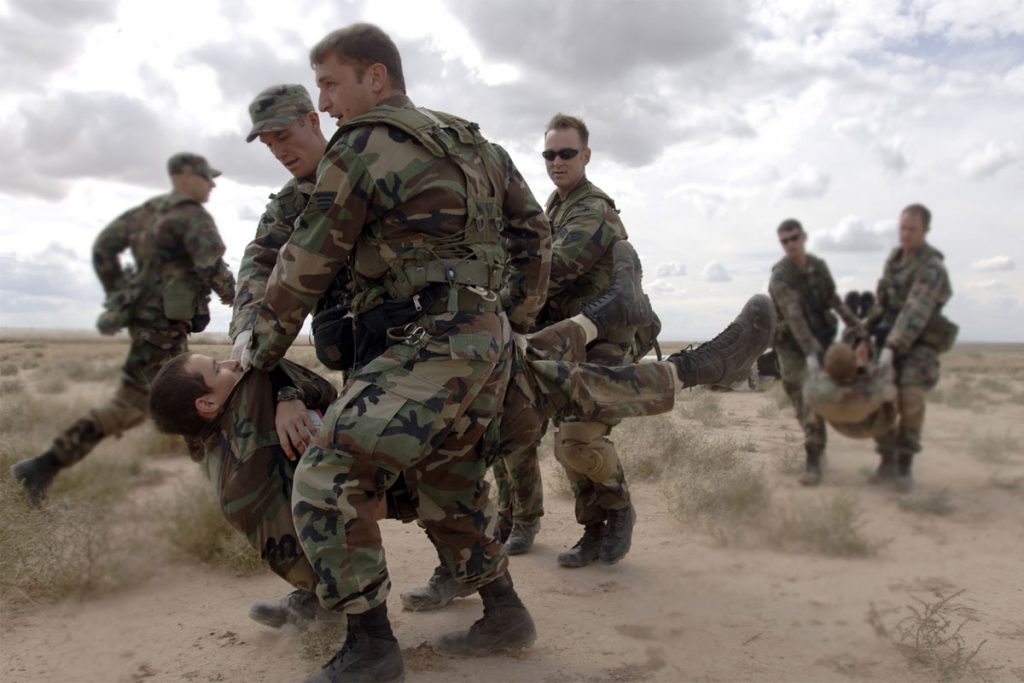
Except for a few outliers. These are the guys you see here and there, usually in or training for special operations. It is also the guys who decide they are going to get into something more serious. These guys join triathlon clubs, adventure race teams, swim clubs, running clubs and so on. These guys not only destroy the PRT, they don’t even seem to be human! It’s not just the PRT they crush, it’s everything from the Expert Infantry Badge to the Battalion 12-mile ruck. They’re like terminators! This paradox puzzles the hell out of people and instead of finding out what they are doing, most redouble their efforts in the gym. You know, doing the same things that have never worked before. That’s classic head-in-sand behavior and it’s sad to observe. But what about those outliers? What the hell are those guys doing that is so effective? The answer is simple. They are training like athletes, not the general fitness population.
To understand this more we have to look at what the general fitness community is all about. It’s quite simple. The objective is a specific body composition. The method is any number of bodybuilding or highly intensive circuit training derivatives mixed with diet modification. The problem is that this approach requires a very stable and consistent lifestyle, a metric ton of self-discipline and a supportive family and work environment. They leave that part out in the magazines. This training also doesn’t actually prepare you for anything in the way of sports or job performance. Yes, of course there is some benefit to having that body composition and a healthy amount of muscle. However, real performance doesn’t come from building muscles and body composition in the gym. It comes from practicing the job or sport and augmenting that effort with specific training to improve your weak points. Consider for a moment that the only athletes in the world who are built in a gym are bodybuilders, power lifters and Olympic lifters. That’s it. If you want to be a soldier, you have to practice being a soldier and augment that effort with specific training to address your weaknesses. That is how those outliers and every Olympian in the world does it. Perhaps it’s time we did the same in the profession of arms.
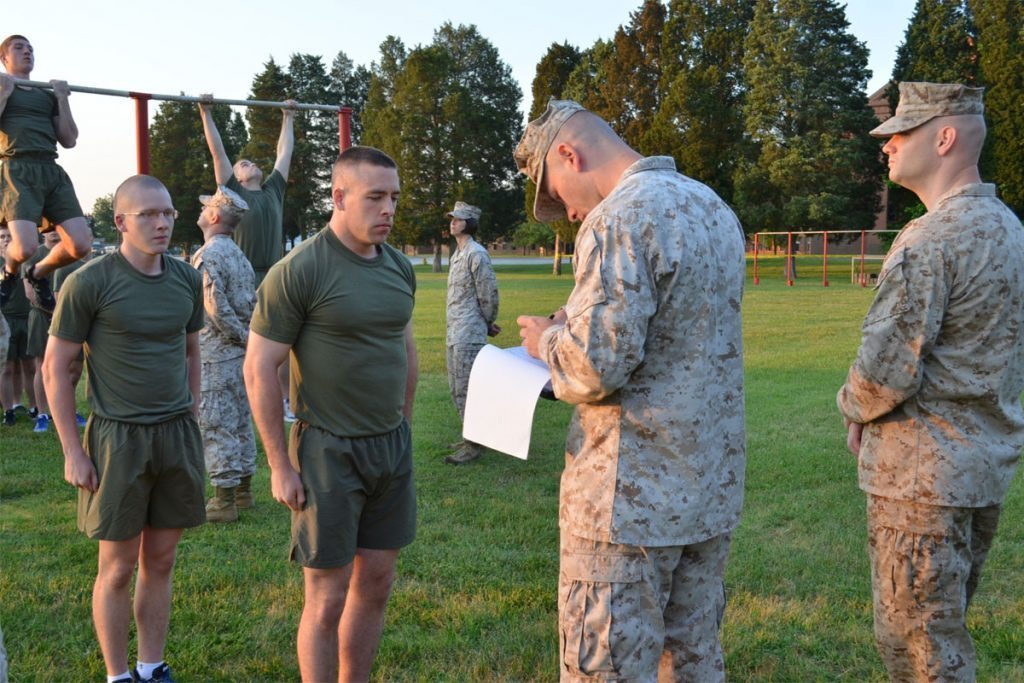
That leads us to the present day physical readiness tests. It is somewhat annoying to observe that when someone creates a test, everyone and their brother simply trains the test. That is why most of the Army wakes up and does push-ups, sit-ups and a run and wonders why their physical readiness sucks. When the Office of the Chairman of The Joint Chiefs of Staff developed the Total Force Fitness doctrine, the writers lamented this problem and recommended that since they couldn’t talk sense into anyone, that someone should develop a test that actually tested all aspects of physical development. Thus far, only my company, RIKR Defence has done that. But we went much further than that.
The real problems surrounding the physical readiness tests is the fact that in the 1960’s the DOD gave up on task specific physical fitness training. This occurred when the DOD was ordered to admit women into combat support positions. The problem was that even in the 1960’s they couldn’t find enough women who could pass either the body composition standards or the physical readiness tests. The government ordered them to find a solution and that proved to be problematic. The DOD only has so much time and resources to devote to a service member. Basic training and AIT are only so long and to whip these ladies into shape was going to take longer and more money than they were allowed. Therefore, a new solution had to be taken.
The solution the DOD came up with was the development of a physical fitness test that didn’t actually measure fitness for combat or military service. Instead they devised a test that could be correlated through existing research to markers of health, not performance. Then they examined service members who could pass this new ‘health test’ and examined their performance in the field. From what they observed, this was good enough and close enough and met the government’s demands. Well, almost. They still had to hold the women to a lower standard because again, they couldn’t find enough women who could meet the male standards. This is an even larger problem today but that is an another article for another time.
It should be immediately obvious that this is a terrible development that didn’t help anyone. Another big change that occurred after this development was the entire structure of the physical training program itself. And this cannot be entirely blamed on women. During this time the DOD was forced to institute body composition standards for men as well. The obesity in the ranks issue was developing with alarming speed and the caliber of the recruits was declining rapidly. The old physical training methods were proving too much for the new breed to handle.
Obviously the one thing that didn’t change was combat itself. Mechanization never actually relieved the soldier of the loads he carried. In fact, the soldier’s load has steadily increased as his physical abilities have declined. Is it any wonder that the injury rate among the average combat arms soldier is 250% per year? And it is any wonder that the leading cause of physical injury are the unit PT programs and field training? Why on earth is the act of physical preparation and job training the leading cause of injury? Because every aspect of it is being done wrong. Beginning with standards.
The use of the physical readiness test today is fraught with confusion. Soldiers and commanders are evaluated on its results even though by doctrine this is incorrect. The PRT by doctrine is used to evaluate the effectiveness of the unit physical training program. If a soldier or unit is performing badly, they are supposed to change their program. Only the commander is supposed to be penalized for bad results. Additionally, there is no penalty for high injury rates.
At this point we need to come to an understanding of what the PRT actually is. The PRT sets the minimum standard for participation and retention. That’s it. Nothing more. It does not and never has set the standard for what is needed in combat, let alone the optimal performance levels for combat. In fact, the DOD has never set such a standard, not even in special operations. If you understand that this is the minimum standard, then this opens a new can of worms. What standard should we be training for and how do we train for it? That last bit is especially relevant since we currently have such a difficult time meeting the present standards. But for now let’s focus on the model issue.
I recently wrote a free report called The Soldier-Athlete Connection. In that report I detailed the fact that soldiers are not athletes (with one exception) but that soldiers must train like athletes. The reason is simple. The job of a soldier has a wide variety of physical and technical skill requirements. In so many ways a soldier is like an athlete but his competition is not for a prize, it is for his life and his nation. So why don’t soldiers train like athletes? Remember, there are only three types of athletes who are built in the gym. Everyone else practices their sport and augments it with specialized training. But before we go too far down that rabbit hole, we have to understand a critical element of athletics. All sports and all positions within a sport have a descriptive or prescriptive model or both. This model specifies all requirements of the athlete. For example, a model for any basketball player is going to state a minimum height and you can bet that it will be over 72-inches! (6ft). Likewise, no football tailback is going to be 275lbs with a BMI of 38! The model also outlines skills and performance metrics. It also details required biomotor abilities. If you have ever heard of or watched the NFL, NHL, NBA or other combine trials then you are seeing this in action. This goes for skills as well as strength and stamina (strength and stamina are biomotor abilities). No Tight End is getting near the NFL with a 315lb bench press; that’s too low.
Thus, a fitness model defines all of the traits and characteristics required of a job applicant or athlete. In other words, it sets the standards. At this point we have to understand the true definition of the word “fitness”. Physical fitness is the ability to perform a physical task or activity effectively and safely to a predefined standard. Effectively means to have the desired outcome, i.e. to the standard. Safely means without compromising the human body in any way. Let me give you a great example of this. In USAF Pararescue there is a standard to run six miles in 42-minutes or less. That is a 7-minute-mile or faster. Lots of people can accomplish this feat. However, it is not a measurement of fitness. The standard is 42-minutes. However, safety and impact on the health of the body are not addressed. If you ran this in 42 minutes but you did so with an average heart rate of 175 beats per minute, then you ran it using predominantly the glycolytic energy system. The metabolic cost to your body was extreme and you are in fact not actually fit. However, if you ran this event in the allotted time with an average heart rate under 150bpm, then you ran it using predominantly the aerobic energy system and we can say that you are quite fit because the impact to the body was minimal and your recovery time will also be minimal. The difference between these two is massive!
This leaves us with a very obvious question. What is the Military Fitness Model we should be using? Fortunately, you can get that for free when you sign up for the RIKR Defence Bulletin. The first message you will get has the model we have developed. The second message will contain the free report, The Soldier-Athlete Connection. In my next installment I will discuss the methods soldiers must use to train like athletes and where you can get a great canned program to get started on your path to true military fitness.
(Images courtesy of Military.com and Wikipedia.com)

